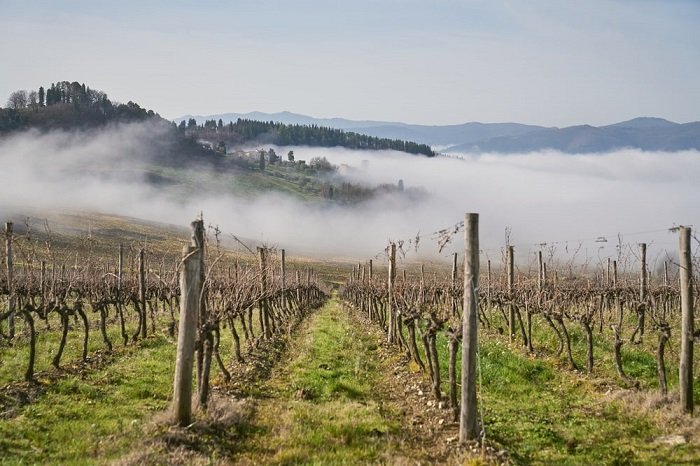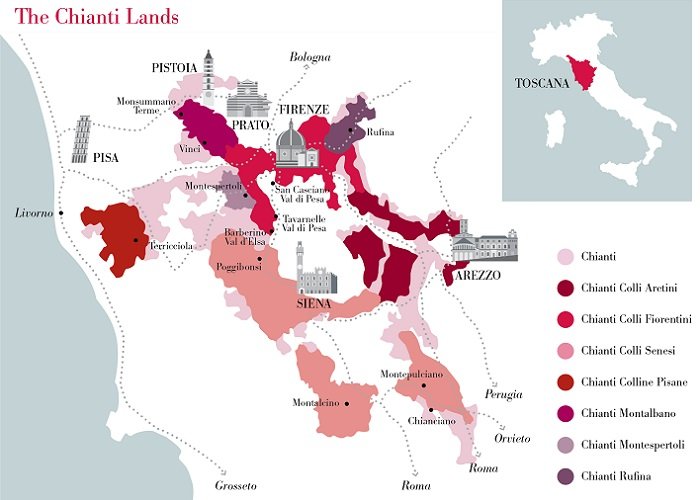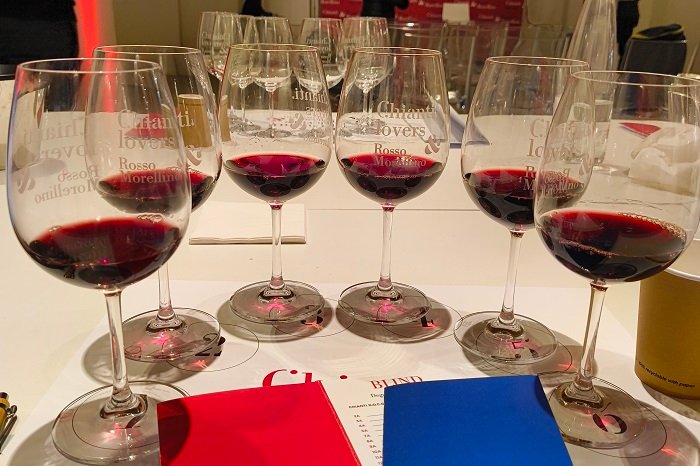Raise your hand if you have never had a glass of Chianti. A straightforward wine with crisp fruit that, for many, represents the Tuscany of everyday drinking. Stefania Vinciguerra offers her thoughts and choices.
Returning to the Tuscan previews, today it is the turn of the Chianti, the third largest Italian wine in terms of volume after Prosecco and Pinot Grigio delle Venezie. An appellation known worldwide but struggling to shake off the image of wine cheap, first-rate, linked to the fiasco in short.

Within the large Chianti Docg container we find a little bit of everything. Wines offered by bottlers which, by their very definition, make big numbers at very low prices and fill supermarket shelves; wines from cooperative wineries that produce honest Chianti at competitive prices, also for sale in supermarkets; wines from small producers who seek quality and manage to come up with excellent wines at extremely honest prices, which can be found in both large-scale retail stores and wine shops and are often found on the wine lists of trattorias; wines from renowned producers which, thanks to their brand, stand out from the crowd and are placed in higher brackets, usually aimed at the Horeca channel.
Orienting oneself in the world of Chianti
It is not easy to find your way around, and the presence of the seven subareas (Rùfina northeast of Florence, Montespertoli southwest of Florence, Montalbano between Florence, Prato and Pistoia, Florentine Hills, Pisan Hills, Sienese Hills e Aretine Hills) does not help much in unraveling the skein. Even the types Superior (lower yield per hectare and 12 months of minimum maturation vs. 6) or Reserve (24 months of maturation) are not easy to read. On paper, the Superiore constitutes an “intermediate” wine between the easy drinkability of the Chianti vintage and the longevity (whether real or presumed) of the Chianti Riserva, but even in this case things – organoleptically speaking – are not so simple.

In any case, there are several projects “simmering in the pot,” and from the anticipations given to us by the president of the Consortium Giovanni Busi the path to be taken is the right one: on the one hand, an easier “basic” type, with the alcohol content stopped at a maximum of 10 percent vol, i.e., 10 degrees, (thus meeting a felt market need); on the other hand, a more articulated type, for those producers who feel they want to go down the path of complexity. We shall see whether the base will approve and whether this clear division between the two extremes will bring greater clarity and ease of understanding for consumers.
The tasting: our favorites

I will preface this by saying that we left out of the tastings the Chianti Rùfina, since this subzone in a sense lives as an appellation in its own right. We always dedicate a separate tasting to Rùfina.
We then come to the wines tasted. As Chianti 2024, we point out those of Badia di Morrona (€ 9), Vecchia Cantina di Montepulciano (€ 7) e Dianella (€ 12), Fruity, fragrant wines with an easy approachability and excellent drinkability. Among the Chianti Superiore 2023 our preferences went to those of Fattoria Uccelliera (€ 14,50), Poggio del Moro (€ 20) e Villa Saletta (€ 15), also with good sharpness of fruit and greater flavor structure.
 We then come to the subareas. In the zone Montalbano certainly the Tenuta di Artimino made an excellent Chianti 2024 (€10.50), while for the Colli Senesi we were convinced by the Poggio Stella 2024 of Old Cellar (€10). Sui Aretine Hills is to be sought Mannucci Droandi, for both Chianti 2024 (€ 10) and Riserva 2022. Sui Florentine Hills the champion is Torre a Cona for all three wines tasted, the Crociferro 2023 (€ 13) and the two reserves 2022 Badia a Corte (€ 23) and Terra di Cino (€ 20).
We then come to the subareas. In the zone Montalbano certainly the Tenuta di Artimino made an excellent Chianti 2024 (€10.50), while for the Colli Senesi we were convinced by the Poggio Stella 2024 of Old Cellar (€10). Sui Aretine Hills is to be sought Mannucci Droandi, for both Chianti 2024 (€ 10) and Riserva 2022. Sui Florentine Hills the champion is Torre a Cona for all three wines tasted, the Crociferro 2023 (€ 13) and the two reserves 2022 Badia a Corte (€ 23) and Terra di Cino (€ 20).
In conclusion, one has to taste a lot to be able to make choices and find one’s heart wines, but considering the value for money, it is worth it.
And for those who missed this year’s Chianti Lovers, the Consortium is planning a traveling event in May to bring Chianti to fans in their cities.




